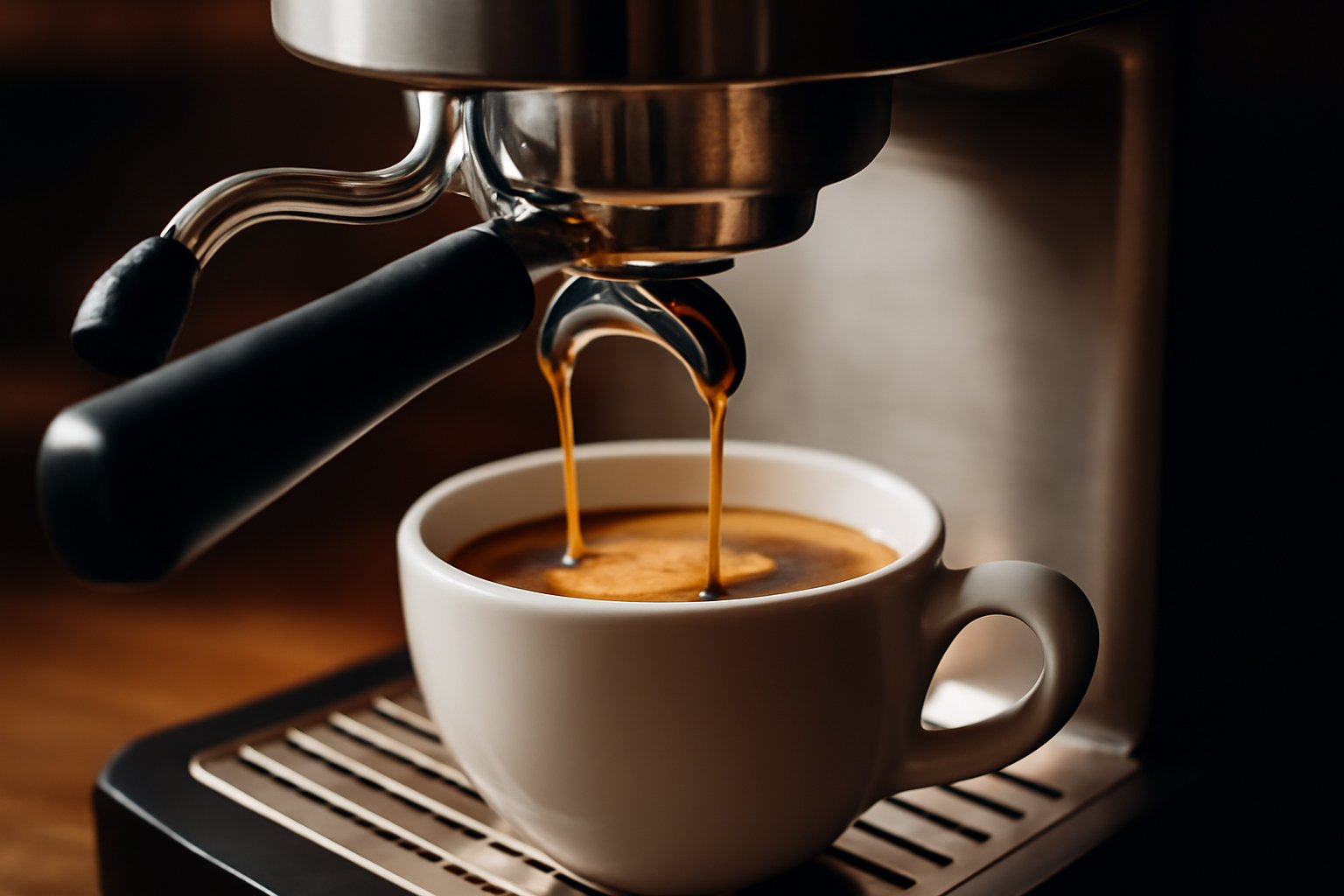Espresso is the foundation of many popular coffee drinks, such as lattes, cappuccinos, and Americanos. It’s a rich, concentrated coffee made by forcing hot water through finely-ground coffee beans under high pressure. Brewing a perfect espresso at home may seem like a challenge, but with the right tools, techniques, and a little practice, you can create barista-quality espresso in the comfort of your own kitchen.
In this article, we’ll walk you through everything you need to know to brew a perfect espresso, including selecting the right coffee beans, using the right equipment, and mastering the brewing process.
1. Choosing the Right Coffee Beans
The key to a great espresso starts with the coffee beans. Unlike regular drip coffee, espresso requires beans that are roasted and ground in a specific way to achieve the rich, concentrated flavor that espresso is known for. Here are some tips on choosing the right beans:
Opt for Espresso Blends
While single-origin coffees can make delicious espressos, espresso blends are typically formulated for the brewing method’s specific characteristics. These blends often contain a combination of Arabica and Robusta beans, which helps balance flavor and enhance crema.
Roast Type
Espresso is usually made with dark roasted beans because the longer roasting process helps bring out a bolder, more intense flavor. However, you can experiment with medium or even light roasts if you prefer a brighter, more acidic espresso.
Freshness Matters
Freshly roasted coffee beans are essential for a flavorful espresso. Beans begin to lose their flavor after they’ve been roasted, so it’s important to use beans that have been roasted within the past two weeks for the best results. Always grind your beans just before brewing for maximum freshness.
2. Grind Size: The Key to Extraction
The grind size is one of the most important factors when brewing espresso. A fine, consistent grind is essential for achieving the right extraction. If the grind is too coarse, the water will pass through too quickly, resulting in under-extraction and a weak, sour taste. If the grind is too fine, the water will struggle to pass through, leading to over-extraction and a bitter flavor.
Ideal Grind Size for Espresso
The grind size for espresso should be fine, similar to table salt. If you’re using a burr grinder, aim for a consistency that’s uniform and powdery but not too fine. The goal is to create a surface area that allows water to extract the coffee evenly and at the right rate.
Adjusting the Grind
If your espresso tastes weak and watery, try using a slightly finer grind. If the shot is overly bitter or takes too long to brew, try using a slightly coarser grind. Fine-tuning your grind size will help you get the best flavor from your beans.
3. The Right Espresso Equipment
To brew a great espresso at home, you need the right equipment. While there are many types of espresso machines, some are more beginner-friendly than others. Here’s a breakdown of the essential equipment:
Espresso Machine
An espresso machine is essential for brewing authentic espresso. There are several types to choose from:
- Manual Espresso Machines: These machines offer the most control, allowing you to adjust the water pressure and brewing time. However, they require skill and experience to master.
- Semi-Automatic Espresso Machines: These machines automate some of the brewing process, such as water flow and temperature control, but still require you to grind, tamp, and load the portafilter.
- Fully Automatic Espresso Machines: These machines take care of the entire brewing process, from grinding the beans to brewing the espresso. They’re ideal for beginners who want a simple, hands-off experience.
Coffee Grinder
A burr grinder is the best choice for making espresso, as it ensures a consistent grind size. Blade grinders tend to produce uneven particles, which can lead to inconsistent extraction and flavor. Burr grinders, whether flat or conical, produce a more uniform grind, giving you better control over the extraction.
Tamper
A tamper is used to compress the ground coffee in the portafilter. It’s important to tamp the coffee evenly and with the right pressure to ensure a uniform extraction. A good tamper will help create a level coffee bed, which is essential for achieving the perfect shot of espresso.
Scale
While not absolutely necessary, a scale can help you measure the exact amount of coffee and water you’re using. Precision is key when brewing espresso, and using a scale ensures consistency. A typical espresso recipe calls for 18-20 grams of coffee for a double shot, with about 36-40 grams of espresso extracted in about 25-30 seconds.
Portafilter
The portafilter holds the ground coffee and is locked into the espresso machine. A standard portafilter holds about 18-20 grams of coffee, which is the right amount for a double shot of espresso. It’s essential to ensure that the portafilter is clean and free of coffee residue before brewing.
4. Mastering the Espresso Brewing Process
Now that you have the right beans, equipment, and grind, it’s time to brew your espresso. Here’s a step-by-step guide to help you brew the perfect espresso shot.
Step 1: Prepare Your Machine
- Turn on your espresso machine and allow it to fully warm up. This usually takes about 15-20 minutes, depending on the machine.
- Run a shot of hot water through the portafilter to warm it up, which helps maintain the temperature during brewing.
Step 2: Grind the Coffee
- Measure out 18-20 grams of coffee beans.
- Grind the beans to a fine consistency, aiming for a texture similar to table salt. Adjust the grind size if needed.
Step 3: Tamp the Coffee
- Place the ground coffee into the portafilter and use the tamper to press the coffee evenly into the portafilter. Apply around 30 pounds of pressure to ensure the coffee is evenly compressed.
- The surface of the coffee should be flat and level to ensure even extraction.
Step 4: Lock the Portafilter and Brew
- Lock the portafilter into the espresso machine and start the brewing process.
- A good shot of espresso should take around 25-30 seconds to extract. The espresso should flow steadily, with a rich, golden crema on top.
Step 5: Enjoy Your Espresso
- Once the shot has been brewed, serve the espresso immediately. The flavor of the espresso is at its peak right after brewing, so enjoy it while it’s fresh.
5. Troubleshooting Common Espresso Problems
Even with the best equipment, it can take a little practice to master the art of brewing espresso. Here are some common problems you may encounter and how to fix them:
- Espresso is too weak or watery: This can be caused by using a coarse grind or under-tamping. Try adjusting the grind size to a finer setting and tamping more firmly.
- Espresso is too bitter or over-extracted: This can be caused by using a fine grind, over-tamping, or brewing for too long. Try using a slightly coarser grind or adjusting the brew time.
- Espresso has no crema: A lack of crema can be caused by stale beans, improper tamping, or an incorrect grind size. Make sure to use fresh beans and tamp evenly.
Conclusion: Brew Your Perfect Espresso
Brewing a perfect espresso at home is both an art and a science. With the right equipment, the right beans, and a bit of practice, you can create a rich, flavorful shot of espresso that rivals your favorite coffee shop. Remember, the key to a great espresso is consistency, so take the time to experiment with your grind size, tamping pressure, and brew time until you find the perfect combination.
With a little patience and persistence, you’ll be brewing espresso like a pro in no time.

I’m an economist with 15 years of experience in strategic planning and a lifelong passion for wellness and natural living. As a self-learner, I created Herbalife Balance to share insights on healthy eating, mindful habits, and an active lifestyle. Tennis enthusiast and nature lover, I believe in balance as a path to well-being. Through this blog, I help others live healthier, more conscious lives.

